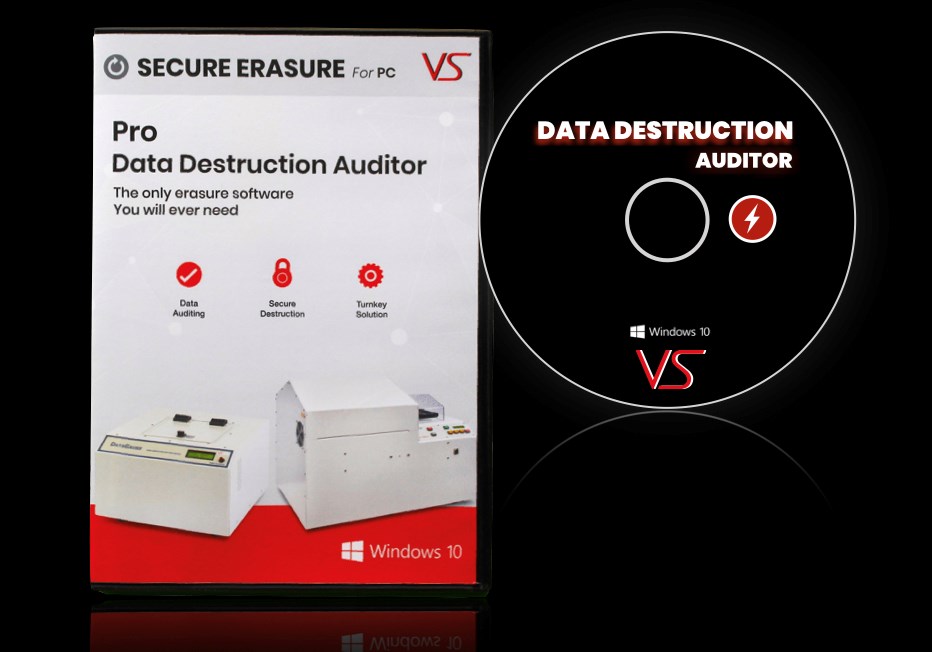The Relevance of Effective Data Destruction Practices in Shielding Sensitive Info and Ensuring Computer System Safety And Security
In a period where information violations are increasingly usual, the importance of reliable information damage methods can not be overemphasized. Carrying out robust data destruction approaches not just alleviates these dangers but additionally straightens with lawful conformity needs, making sure that organizations maintain their track record and foster client count on.
Comprehending Information Devastation
Recognizing information destruction is essential in today's digital landscape, where delicate info can easily be compromised. Effective data devastation includes not just guaranteeing but removing files that data is irretrievable with comprehensive methods. This procedure is vital for organizations that manage personal client details, copyright, or inner records, as any type of violation can result in severe financial and reputational effects.
Data destruction incorporates different methods, including shredding physical media, degaussing magnetic storage tools, and employing software-based services that overwrite information numerous times. Each method offers a certain purpose and has to line up with the sensitivity of the information being thrown away. Physical destruction is usually preferred for hard drives including highly confidential data, while software application techniques could suffice for less delicate details.
In addition, adhering to sector criteria and regulations, such as the General Information Protection Law (GDPR) or the Health Insurance Policy Portability and Responsibility Act (HIPAA), is imperative for compliance and to alleviate lawful dangers. Organizations should establish a robust information destruction plan, train employees on best techniques, and routinely investigate their procedures to make sure that all delicate info is dealt with safely and properly.
Risks of Inadequate Practices
Inadequate data devastation practices expose organizations to significant risks that can have far-reaching effects. When sensitive details is not effectively disposed of, it remains prone to unauthorized access, which can lead to data violations and identity burglary. Such incidents not just endanger the security of individuals but also tarnish the company's track record, leading to a loss of customer trust fund and possible economic repercussions.
Furthermore, regulative conformity is significantly stringent in numerous markets. Failing to follow information destruction policies can cause large fines and lawsuits against organizations. These charges can stress funds and divert interest from core business operations.
Additionally, the abuse of residual data can lead to copyright theft or business espionage, endangering affordable advantages (data destruction). The impact of insufficient information devastation extends past immediate monetary losses; it can also result in long-lasting damage to brand integrity and market placement

Organizations need to identify that data safety and security is not entirely regarding avoiding breaches; it likewise encompasses the accountable monitoring of data throughout its lifecycle. Ignoring reliable data destruction protocols can have catastrophic ramifications, underscoring the requirement for robust steps to mitigate these dangers.
Finest Practices for Data Destruction
Carrying out reliable data devastation methods is essential for securing delicate details and maintaining conformity with regulatory standards. Organizations needs to embrace a multi-faceted method to make certain that data is irretrievable, therefore stopping unauthorized access and prospective violations.
First, data ought to be categorized based upon sensitivity, permitting companies to apply suitable damage methods tailored to the degree of danger. For digital information, using software-based data-wiping devices that adhere to market requirements can efficiently overwrite existing information. Physical devastation approaches, such as shredding or degaussing, are essential for devices that store sensitive info, ensuring complete obliteration.
Establishing a clear information retention plan is crucial, describing how much time different kinds of information ought to be maintained prior to devastation. Routine audits of data storage space systems are likewise needed to determine outdated or unnecessary data requiring removal.
Furthermore, training employees on the relevance of information devastation and the details methods to follow fosters a culture of protection within the organization. Finally, keeping documents of data destruction refines gives liability and supports compliance with interior plans and exterior guidelines. By sticking to these finest techniques, organizations can significantly alleviate the dangers connected with data direct exposure.
Legal and Conformity Considerations

Failing to abide by these guidelines can result in severe fines, consisting of considerable fines and reputational damage. Organizations should implement a robust information destruction plan that straightens with these legal frameworks and provides clear guidelines on the correct approaches of information disposal, whether physical shredding or digital wiping.
Moreover, maintaining documentation of information destruction tasks is necessary for demonstrating conformity during audits or examinations. By focusing on legal and compliance considerations, organizations can enhance their information safety posture and foster depend on with clients and stakeholders, ultimately adding to a much more safe and secure information management setting.
Benefits of Effective Data Destruction
Efficient information destruction practices expand past plain compliance; they offer substantial advantages to companies that prioritize them. By making sure that delicate details is irretrievably damaged, organizations minimize the threat of data breaches and the prospective monetary repercussions connected with them. This positive method not just safeguards versus unauthorized accessibility however also improves the total credibility of the organization in the eyes of stakeholders and clients.
Implementing robust data damage methods, such as physical damage of storage space tools or innovative information cleaning methods, adds to the fortifying of an organization's cybersecurity pose. data destruction. It minimizes the possibility of intellectual residential property burglary and shields proprietary info, thereby maintaining an one-upmanship in the market

Final Thought
Finally, reliable information damage practices are necessary for securing sensitive details and boosting total computer view safety. By carrying out detailed techniques such as shredding, software, and degaussing overwriting, organizations can mitigate the dangers connected with unapproved accessibility and data violations. Adherence to regulative standards, including GDPR and HIPAA, further enhances compliance and protects versus lawful effects. Eventually, a dedication to durable data devastation methods promotes a culture of duty, thus reinforcing an organization's cybersecurity pose and keeping client count on.
